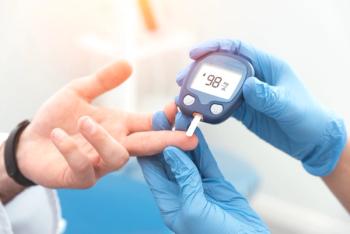
Did offline WIC benefits reduce participation during the pandemic?
Some states require a person to mail in the benefits card or visit a local office to receive more Special Supplemental Nutrition Program for Women, Infants, and Children (WIC) benefits. With the inherent risk of in-person contact or delays in mail, did this lead some families to not participate?
In the early days of the pandemic, nearly a third of children in the United States experienced food insecurity in their household. Many of these children are in low-income families, for which the Special Supplemental Nutrition Program for Women, Infants, and Children (WIC) is an important source of nutrition. Although most states automatically reload the electronic benefits transfer debit cards each month, 9 states (Arkansas, Louisiana, Missouri, New Mexico, Ohio, Pennsylvania, Texas, Utah, and Wyoming) require those who receive benefits to either mail their benefits card or go their local WIC office every 3 to 4 months to have the cards reloaded. With the risk of in-person contact, increasing delays in the mail, and increased financial stress due to the COVID-19 pandemic,
Investigators used the US Department of Agriculture WIC monthly benefit summary to determine the number of WIC participants in each state per month. The reports were also used to determine whether a state provided online (automatically loaded benefits) or offline (required action on the part of the beneficiary to continue to receive benefits). The 10 states that moved from paper vouchers to electronic benefits transfer cards were removed from the sample.
There were 40 states included, with 7 requiring offline benefits reloading and 33 that performed online benefits reloading. Online and offline states had similar poverty and overall unemployment rates, as well as similar unemployment rates during the pandemic. No statistical evidence of differing WIC participation trends were seen across the states before the pandemic (β = .0002; P = .91). Before the pandemic, the average number of beneficiaries was 1,275,631 in offline states and 4,018,835 in online states. During the pandemic, the number decreased to 1,219,090 in offline states and increased to 4,158,981 in online states. In adjusted difference-in-difference models, offline benefits reloading states had a relative decrease in participation versus the online states (−9.33% [95% CI, −14.35% to −4.31%], P < .001). Furthermore, in offline states, there was no significant relative change in the Supplemental Nutrition Assistance Program, which loads benefits online in all states (difference, 1.58% [95% CI, −2.43% to 5.59%]; P = .44).
The investigators concluded that the use of offline electronic benefits transfer reloading resulted in significant decreases in WIC participation during the COVID-19 pandemic. They noted that the findings support worries that even the most minor issues found with accessing public programs may lead to significant reductions in participation.
Reference
1. Vasan A, Kenyon C, Roberto C, Fiks A, Venkataramani A. Association of remote vs in-person benefit delivery with WIC participation during the COVID-19 pandemic. JAMA. August 20, 2021. Epub ahead of print. doi:10.1001/jama.2021.14356
Newsletter
Access practical, evidence-based guidance to support better care for our youngest patients. Join our email list for the latest clinical updates.









